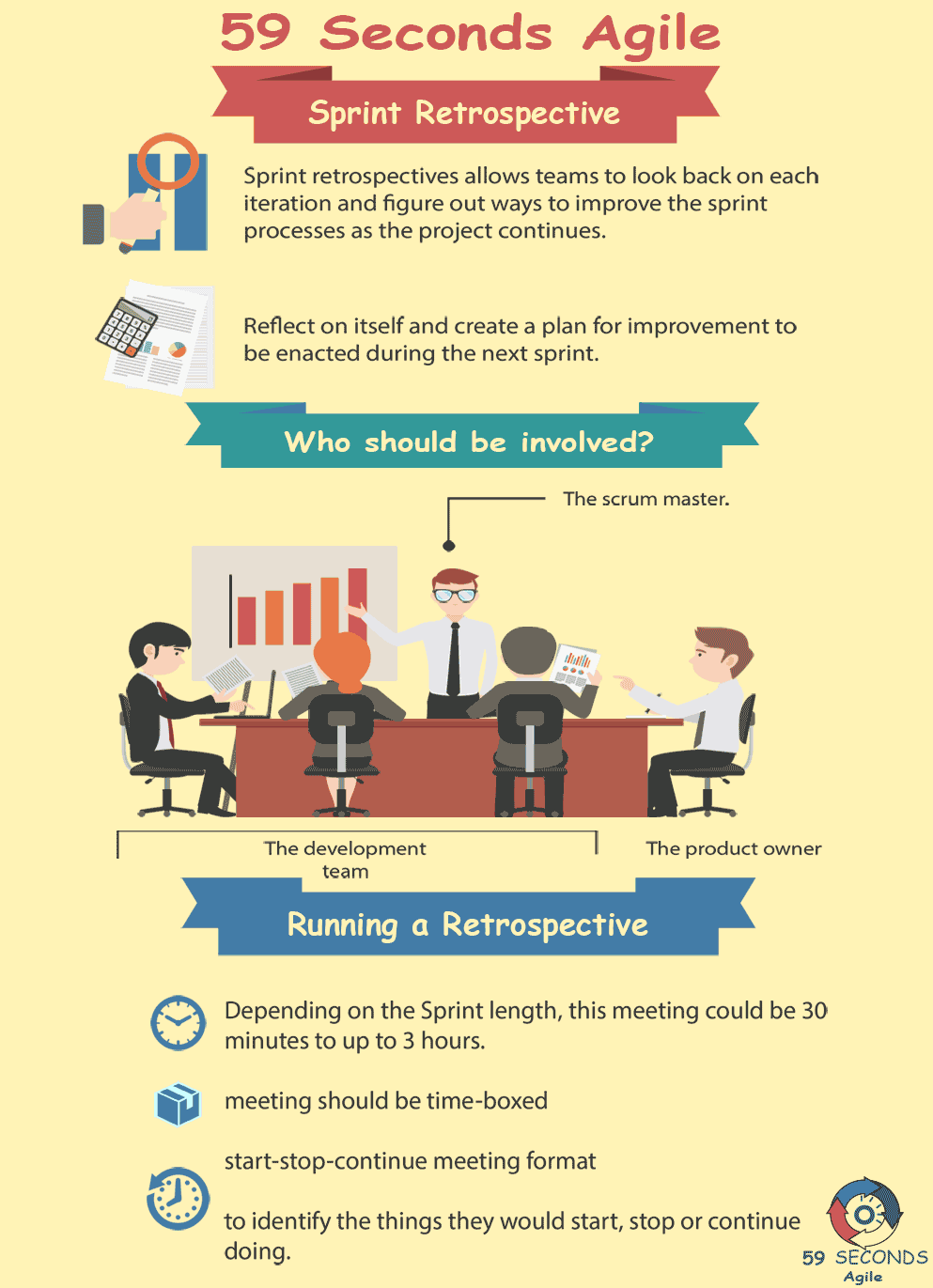The Sprint Retrospective for Developers
Agile Software Development consists of many different types of meetings and ceremonies. One of these is the Sprint Retrospective. Like any other meetings in Agile development, the Sprint Retrospective has certain inputs and certain outputs. At the end of the day, a Scrum team only has meetings and practices that help the team accomplish their goals. The Sprint Retrospective is no different, and it has benefits for the entire team, including the developer role.
What is the Sprint Retrospective?
The Sprint Retrospective is a meeting held at the end of every sprint. As the name implies, the goal of the Sprint Retrospective is to look back on the previous sprint and see what went well, what went badly, and what things could be done differently. When properly applied, the Sprint Retrospective almost always makes the next sprint operate more smoothly and efficiently. The Scrum team will occasionally try new methods and practices. When these new things help the team, they are repeated and reinforced. When they hinder the team, they are changed or abandoned completely.
Everyone on a Scrum team participates in the Sprint Retrospective. Since decisions made in the Sprint Retrospective affect an entire team, it is vital that all team members offer their input. Above all else, the Sprint Retrospective is a discussion. Even if team members disagree on certain parts of the sprint, they can discuss their opinions and come to a common ground in most cases. The best Sprint Retrospectives are those in which all team members can speak freely. Teams that judge members based on what they contribute will stifle feedback. Even if nothing comes of a suggestion, it is important that every team member is encouraged to say how they felt about the sprint.
One common way to organize a Sprint Retrospective is to have team members say what they think the team should stop, start, and continue. Practices that inhibit the team or waste time should be stopped. Things like unnecessary documentation and red tape should be kept to a minimum. If team members can come up with ideas to try that might improve efficiency or performance, they should start these methods in the next sprint. New practices that ended up benefiting the team should be continued. Even if something helped, it may be better to take things a step further and tweak a new practice. No team is perfect, and every sprint could benefit from changes and improvements.

What Does the Developer Contribute to the Sprint Retrospective?
Each team member is expected to contribute to the Sprint Retrospective. Exactly what they contribute depends on the role, however. Like all roles, developers give their own perspective of what went good or bad in the previous sprint. What developers see as good may differ from what other roles though. For example, developers may prefer more comprehensive specifications, but the roles who write the specification may see it as a waste of time. The Sprint Retrospective is a chance to work out these differences. Developers must look out for themselves, but not at the expense of other roles. Every team member must be able to satisfy the expectations of their role as effectively as possible.
Some suggestions may be specific to developers. Changes to what development environment or tools a team uses would likely only affect developers. With facets like this, developers might discuss among themselves to come up with an ideal solution, or new practice to try. Other suggestions may affect other roles, if not the entire team. Changing the workflow of how programming assignments and bug reports operate likely require changes from each role. In cases like this, it is important that every role voice their opinion before the team makes a decision to change for the next sprint.
Prev <— Continue Reading —> Next
Our Favourite Agile Books
We found these books great for finding out more information on Agile Scrum:

